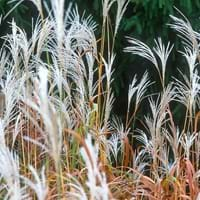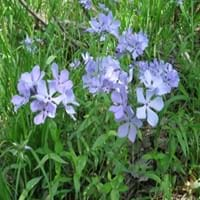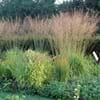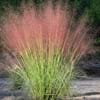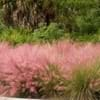Life Span
Perennial
Perennial
Type
Grass
Flowering Plants
Origin
Africa, Southern Asia
Northeastern United States, Mid-Atlantic United States, Southeastern United States, Central United States, Texas, Canada
Types
Not Available
Blue Moon, Clouds of Perfume
Number of Varieties
Not Available
Habitat
Floodplains, meadows, Riverbanks
Rich Woods
USDA Hardiness Zone
4-9
4-8
Sunset Zone
Not Available
1a, 1b, 2a, 2b, 3a, 3b, 4, 5, 6, 7, 8, 9, 10, 11, 12, 13, 14, 15, 16, 17
Habit
Clump-Forming
Mat-forming
Flower Color
Not Available
Blue Violet
Flower Color Modifier
Bicolor
Bicolor
Fruit Color
Not Available
Not Available
Leaf Color in Spring
Dark Green
Green
Leaf Color in Summer
Light Green
Green
Leaf Color in Fall
Orange, Light Yellow, Gold, Brown, Bronze
Green
Leaf Color in Winter
Orange, Light Yellow, Gold, Brown, Bronze
Not Available
Leaf Shape
Long Linear
Ovate-lanceolate
Plant Season
Summer, Fall
Spring
Sunlight
Full Sun, Partial Sun
Partial Sun, Partial shade
The pH of Soil
Acidic, Neutral
Neutral
Soil Drainage
Average
Well drained
Bloom Time
Late Spring, Early Summer, Summer, Late Summer, Early Fall
Spring
Tolerances
Drought
Not Available
Where to Plant?
Container, Ground, Pot
Container
How to Plant?
Divison, Seedlings
Cuttings, Seedlings
Plant Maintenance
Medium
Medium
Watering Requirements
Requires regular watering
Requires regular watering
In Summer
Lots of watering
Lots of watering
In Spring
Moderate
Moderate
In Winter
Average Water
Average Water
Soil pH
Acidic, Neutral
Neutral
Soil Drainage Capacity
Average
Well drained
Sun Exposure
Full Sun, Partial Sun
Partial Sun, Partial shade
Pruning
Remove dead or diseased plant parts
Remove dead flowers
Fertilizers
All-Purpose Liquid Fertilizer
Apply 10-10-10 amount
Pests and Diseases
Not Available
Leaf spot, Powdery mildew, Rust
Plant Tolerance
Drought
Drought
Flowers
Not Available
Showy
Flower Petal Number
Single
Single
Foliage Texture
Medium
Medium
Foliage Sheen
Matte
Matte
Attracts
Not Available
Hummingbirds, Butterflies
Allergy
Asthma
Mild Allergen
Aesthetic Uses
Showy Purposes
Ground Cover
Beauty Benefits
Not Available
Not Available
Environmental Uses
Air purification
Air purification
Medicinal Uses
No Medicinal Use
Boils, Eczema, Intestinal disorders
Part of Plant Used
Whole plant
Flowers, Leaves, Root
Other Uses
Used as Ornamental plant
As a tea substitute, Used as eyewash
Used As Indoor Plant
Insignificant
No
Used As Outdoor Plant
Yes
Yes
Garden Design
Container, Hedges, Mixed Border, Screening / Wind Break
Mixed Border, Rock Garden / Wall, Wildflower
Botanical Name
MISCANTHUS sacchariflorus
PHLOX divaricata 'Blue Moon'
Common Name
Amur Silvergrass
Wild Blue Phlox, Woodland Phlox
In Hindi
Amur Silvergrass
Wild Blue Phlox
In German
Amur Schilf
Wild Blue Phlox
In French
Amur silvergrass
Wild Blue Phlox
In Spanish
Amur silvergrass
Wild Blue Phlox
In Greek
Amur Silvergrass
Άγρια μπλε Phlox
In Portuguese
Amur Silvergrass
Wild Blue Phlox
In Polish
Amur Silvergrass
Dziki Niebieski Phlox
In Latin
Amur Silvergrass
Phlox ferae blue
Phylum
Magnoliophyta
Magnoliophyta
Class
Liliopsida
Magnoliopsida
Order
Cyperales
Solanales
Family
Poaceae
Polemoniaceae
Clade
Angiosperms, Commelinids, Monocots
Angiosperms, Asterids, Eudicots
Tribe
Not Available
Phlocideae
Subfamily
Panicoideae
Polemonioideae
Number of Species
Not Available
Properties of Amur Silvergrass and Wild Blue Phlox
Wondering what are the properties of Amur Silvergrass and Wild Blue Phlox? We provide you with everything About Amur Silvergrass and Wild Blue Phlox. Amur Silvergrass doesn't have thorns and Wild Blue Phlox doesn't have thorns. Also Amur Silvergrass does not have fragrant flowers. Amur Silvergrass has allergic reactions like Asthma and Wild Blue Phlox has allergic reactions like Asthma. Compare all the properties and characteristics of these two plants. Find out which of these plant can be used as indoor plant. If you are interested to decorate your house and garden, find out aesthetic uses, compare them and select the plant which will beautify your surrounding. Along with beautification, try comparing medicinal and edible uses of Amur Silvergrass and Wild Blue Phlox and you can choose the plant having best and most benefits.
Season and Care of Amur Silvergrass and Wild Blue Phlox
Season and care of Amur Silvergrass and Wild Blue Phlox is important to know. While considering everything about Amur Silvergrass and Wild Blue Phlox Care, growing season is an essential factor. Amur Silvergrass season is Summer and Fall and Wild Blue Phlox season is Summer and Fall. The type of soil for Amur Silvergrass is Loam and for Wild Blue Phlox is Loam while the PH of soil for Amur Silvergrass is Acidic, Neutral and for Wild Blue Phlox is Neutral.
Amur Silvergrass and Wild Blue Phlox Physical Information
Amur Silvergrass and Wild Blue Phlox physical information is very important for comparison. Amur Silvergrass height is 90.00 cm and width 90.00 cm whereas Wild Blue Phlox height is 30.50 cm and width 30.50 cm. The color specification of Amur Silvergrass and Wild Blue Phlox are as follows:
Amur Silvergrass flower color: Not Available
Amur Silvergrass leaf color: Dark Green
Wild Blue Phlox flower color: Blue Violet
- Wild Blue Phlox leaf color: Green
Care of Amur Silvergrass and Wild Blue Phlox
Care of Amur Silvergrass and Wild Blue Phlox include pruning, fertilizers, watering etc. Amur Silvergrass pruning is done Remove dead or diseased plant parts and Wild Blue Phlox pruning is done Remove dead flowers. In summer Amur Silvergrass needs Lots of watering and in winter, it needs Average Water. Whereas, in summer Wild Blue Phlox needs Lots of watering and in winter, it needs Average Water.
